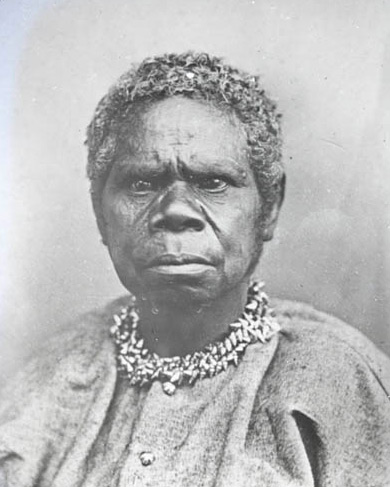Trukanini
Although the photographer was not interested in capturing the personality of his Aboriginal sitters, Woolley's portrait of Trukanini offers the viewer an insight to her strong character.
What words would you use to describe Trukanini’s expression?
What does Trukanini’s expression tell you about her character?
Trukanini wears a maireener shell necklace threaded on a thin cord of bark and grass. Following colonisation, Aboriginal women and men often sold or exchanged these traditional necklaces for food, clothing and essential supplies.
What do Trukanini’s clothing and accessories communicate to the viewer about her status and wealth?
A glass plate negative is the result of exposing an image through a camera onto a sheet of glass coated with light sensitive emulsion. This negative was created at Woolley’s commercial photography studio in Hobart, though the background provides no details about the setting.
If you could add your own background to the portrait, what would it be?
Wrongly considered the ‘last of the Tasmanian Aborigines’, Trukanini was a highly sought after portrait subject for artists working in a range of media. Charles Woolley promoted his photographs of Trukanini as important scientific records of a dying race.
See another photograph of Trukanini by Charles Woolley in the National Portrait Gallery collection.
Look at the portrait bust of Trukanini created by Benjamin Law in 1836.
Discuss the similarities and differences between the painted plaster bust of Trukanini and the photographic portrait.
Move your mouse over the portrait to
see the points of interest.
About the artist
Charles Woolley was born in Tasmania in 1834 and from 1860 to 1870 ran his own photography studio in Macquarie Street, Hobart.
Woolley’s portrait of Trukanini was one of five photographs shown at the Melbourne Intercolonial Exhibition in 1866 under the title ‘The Last Tasmanians’.


